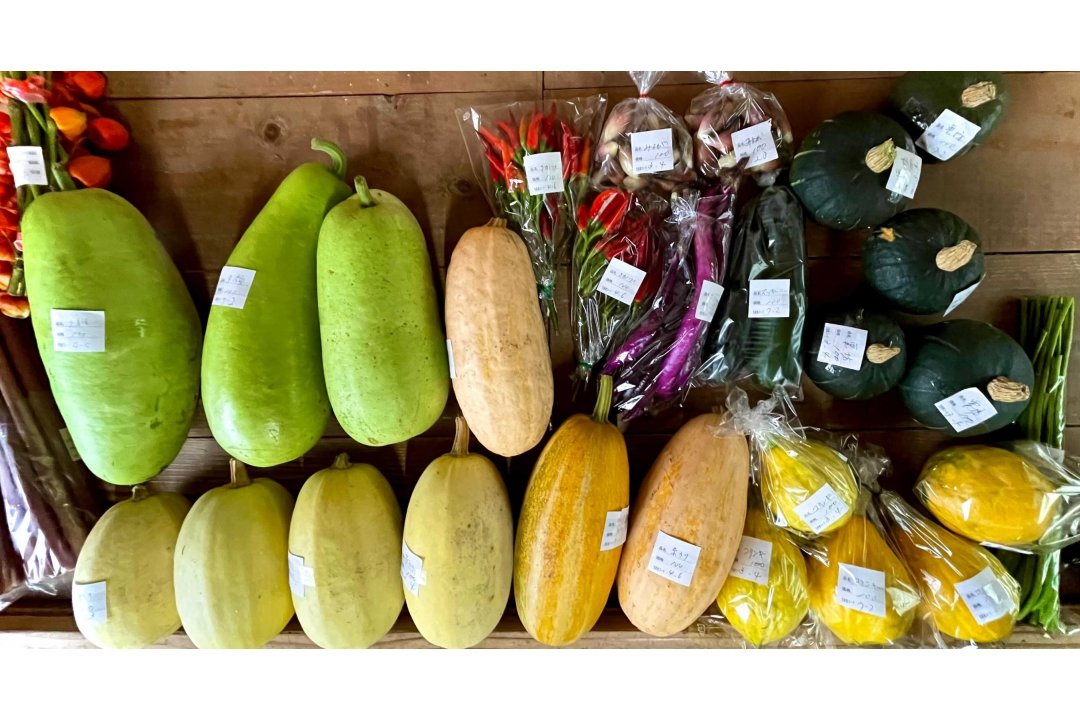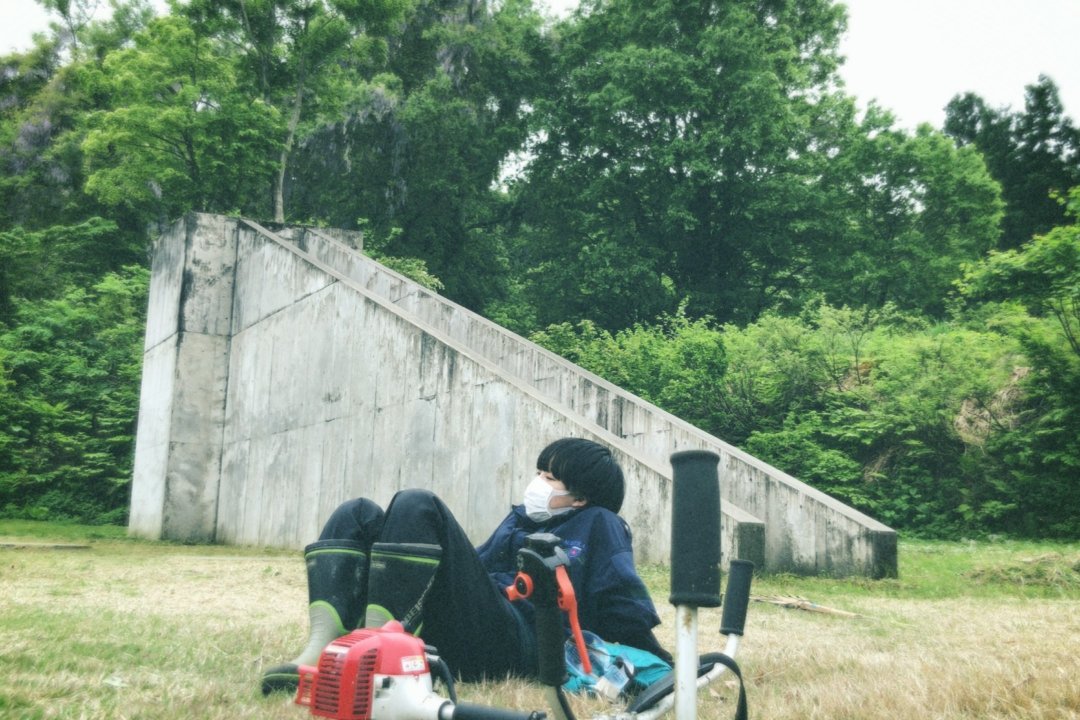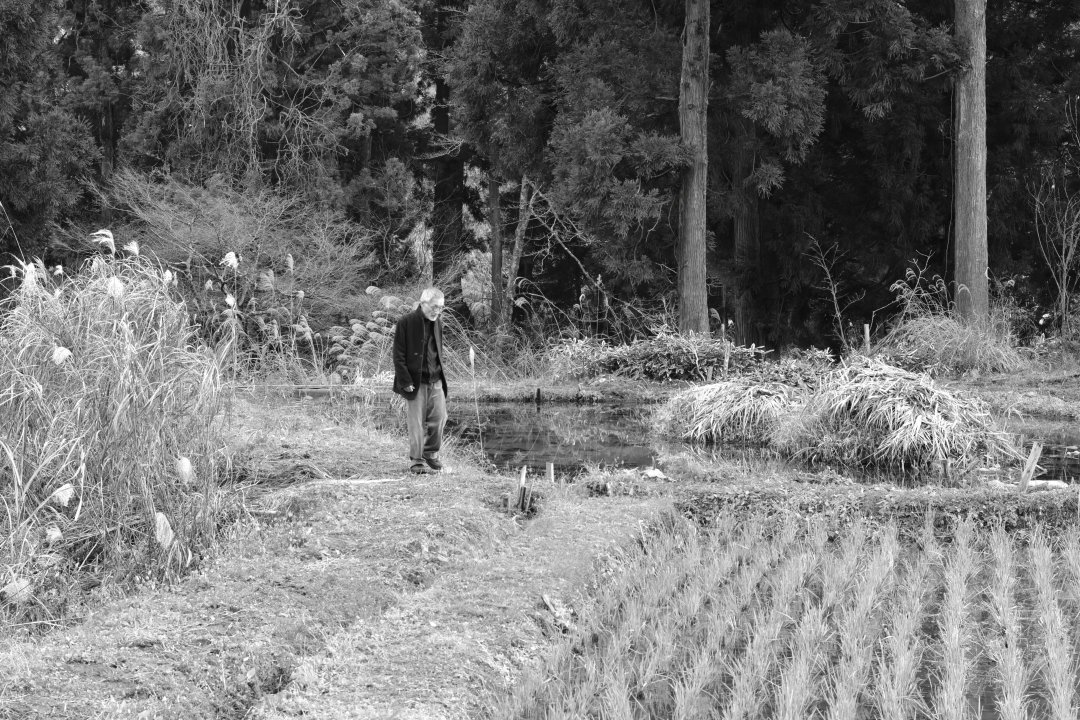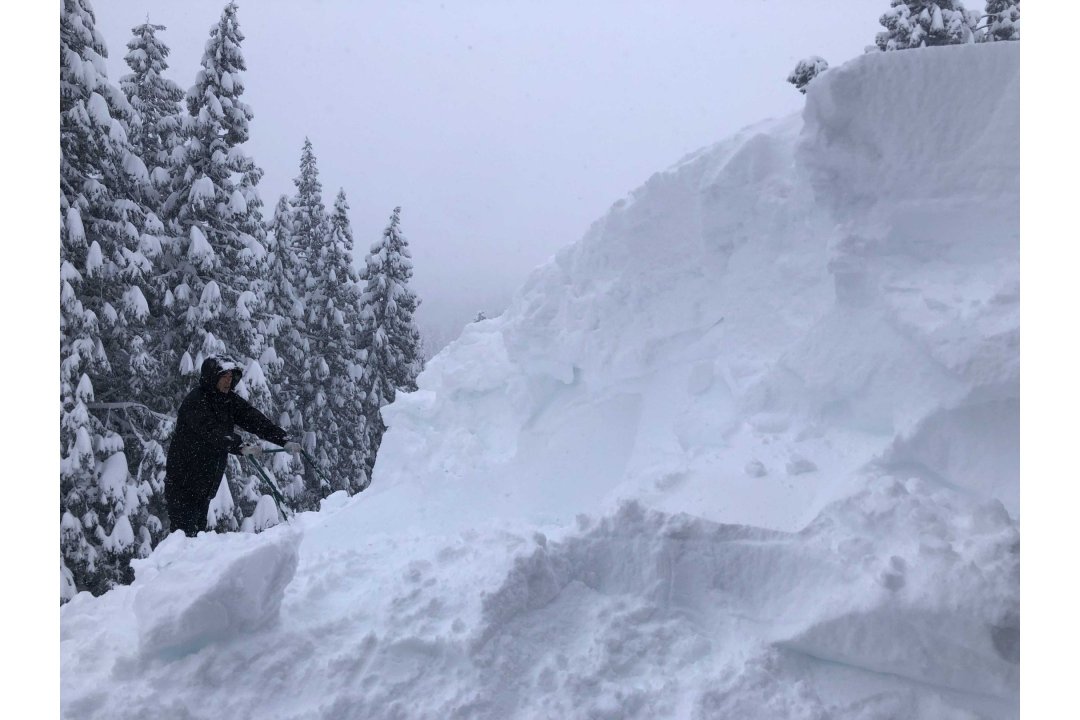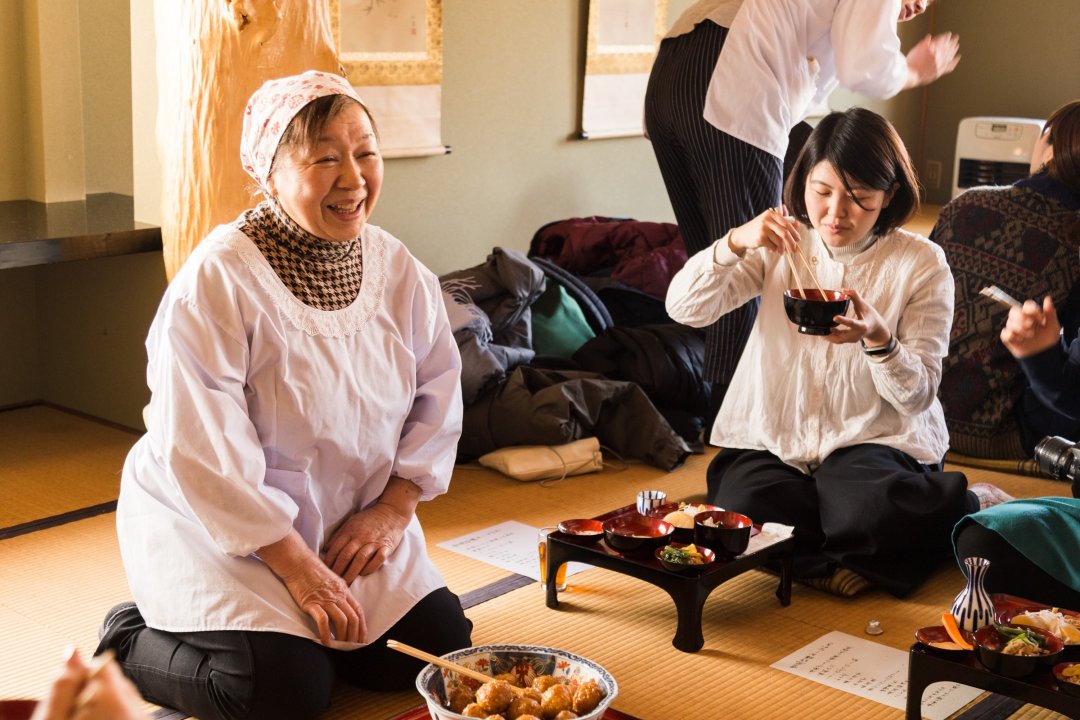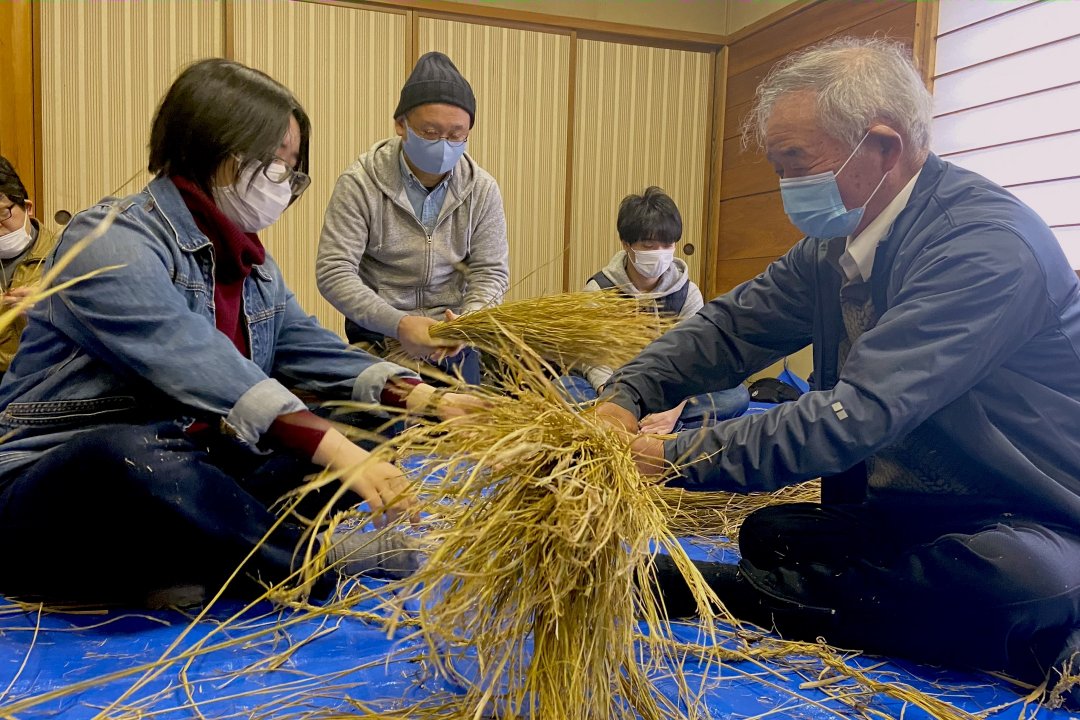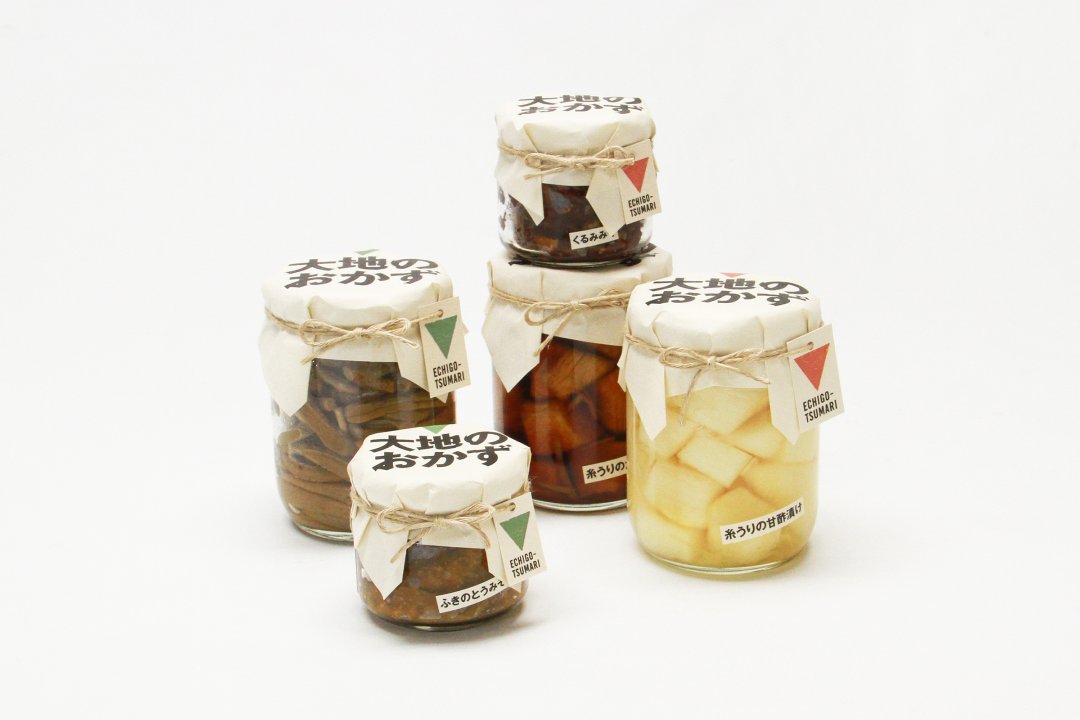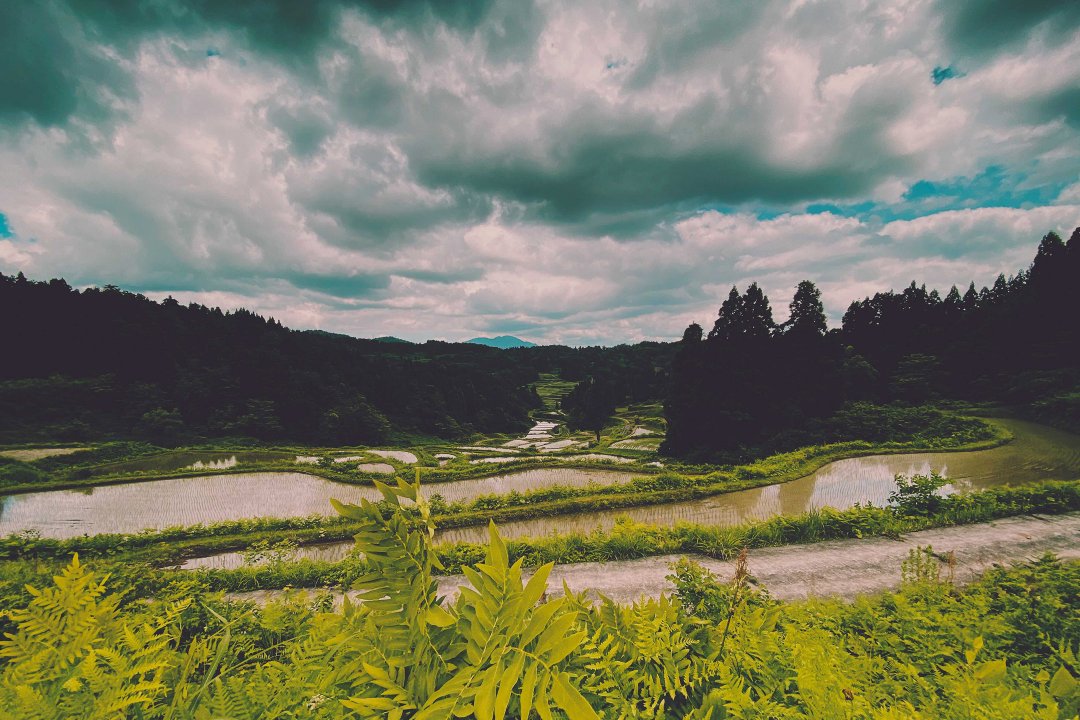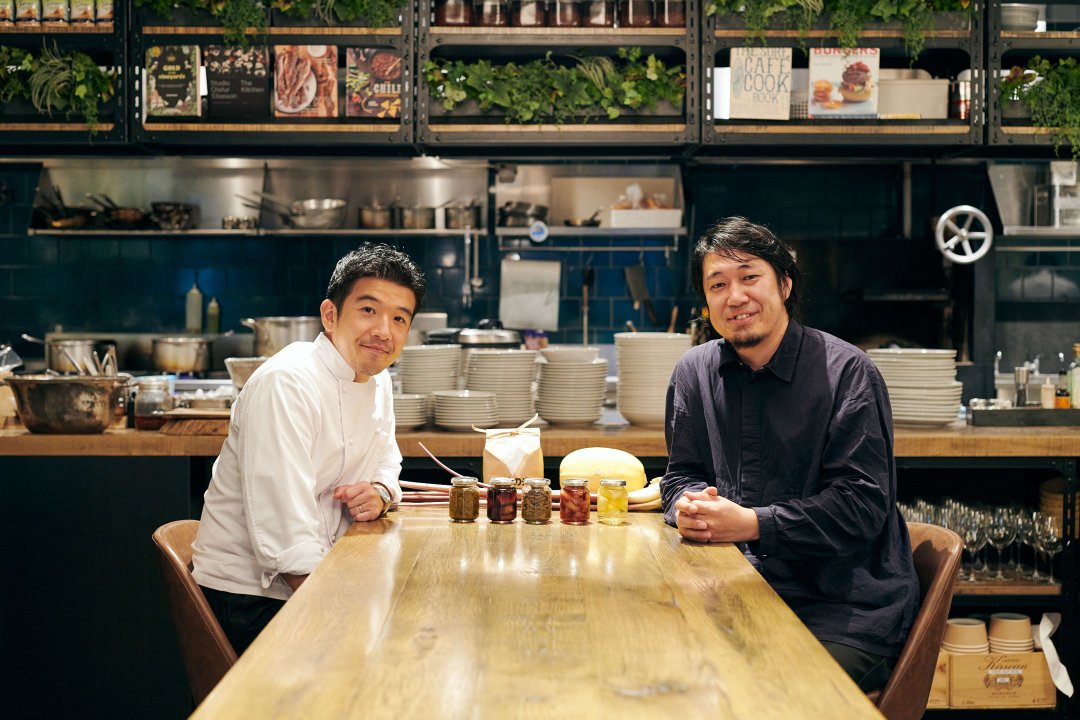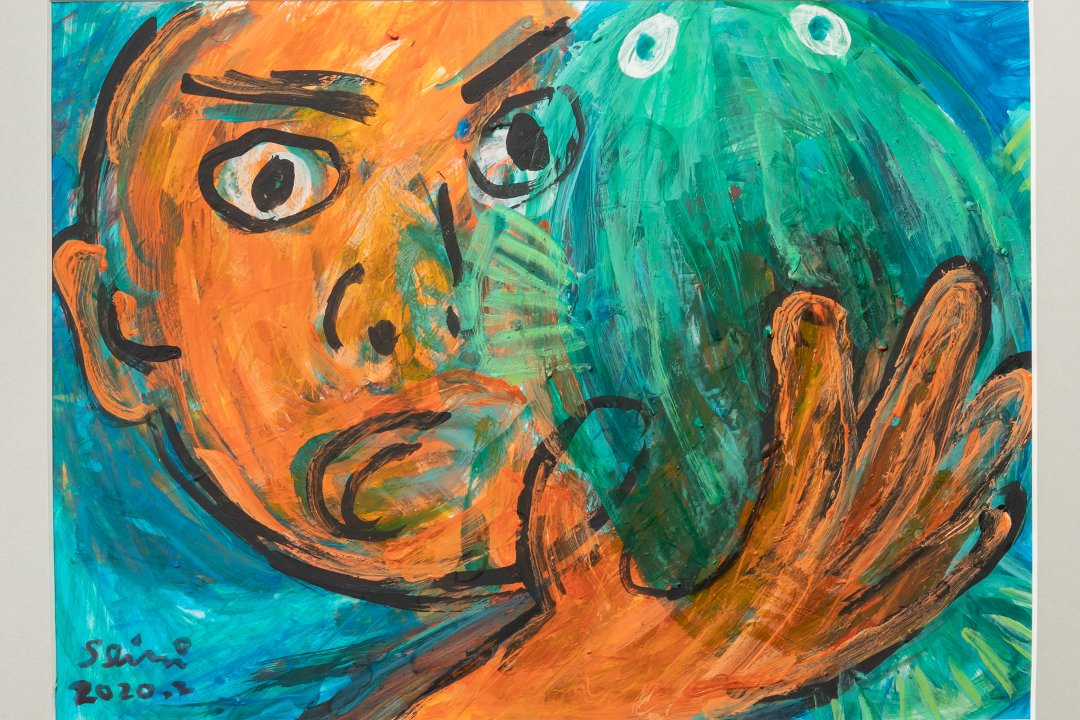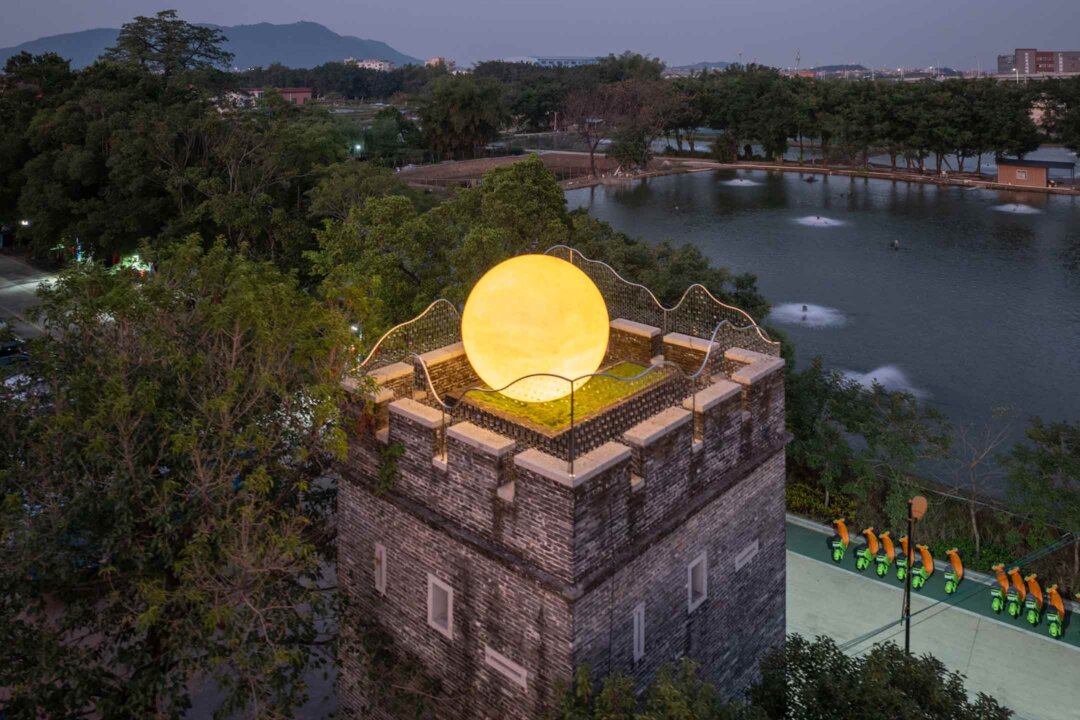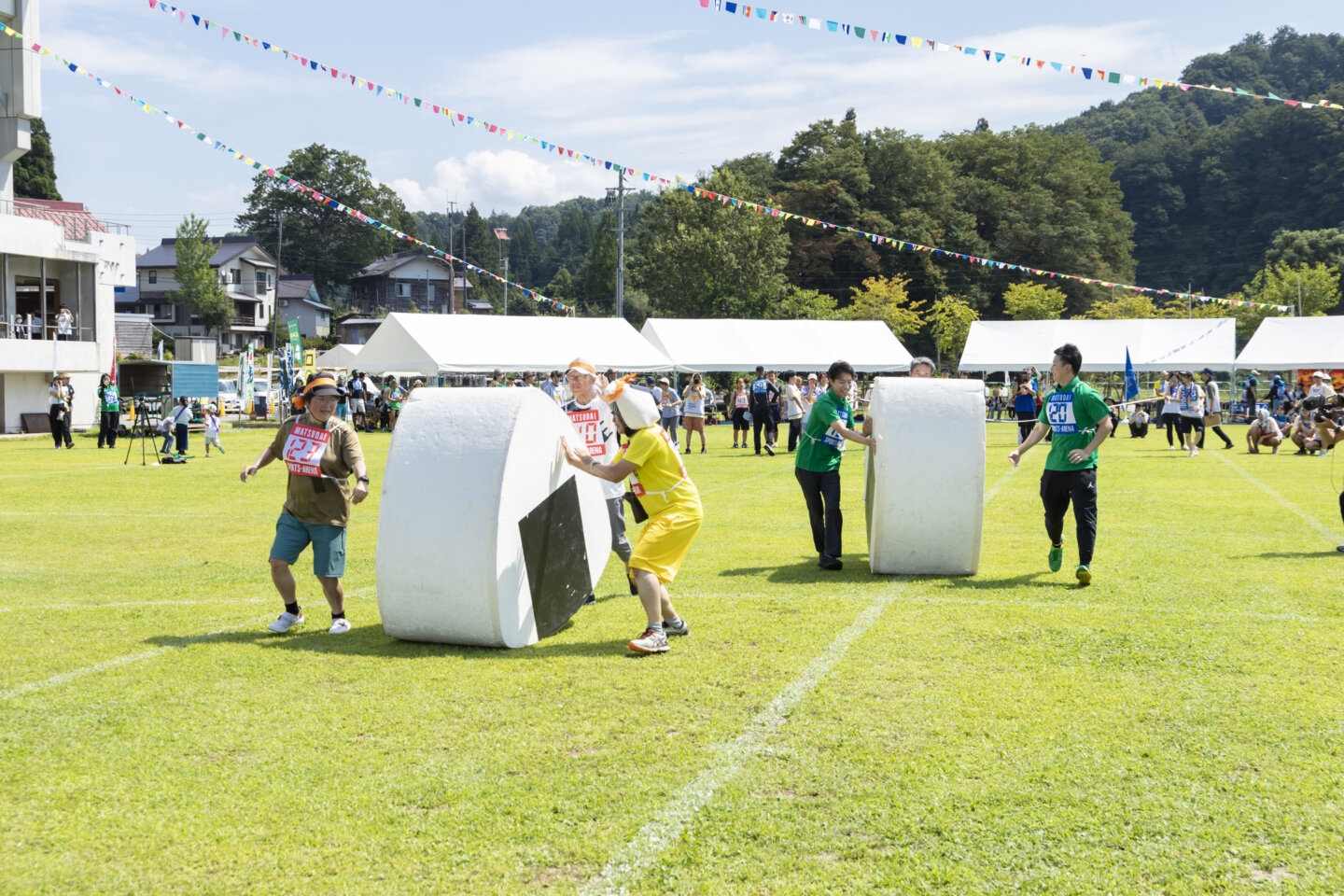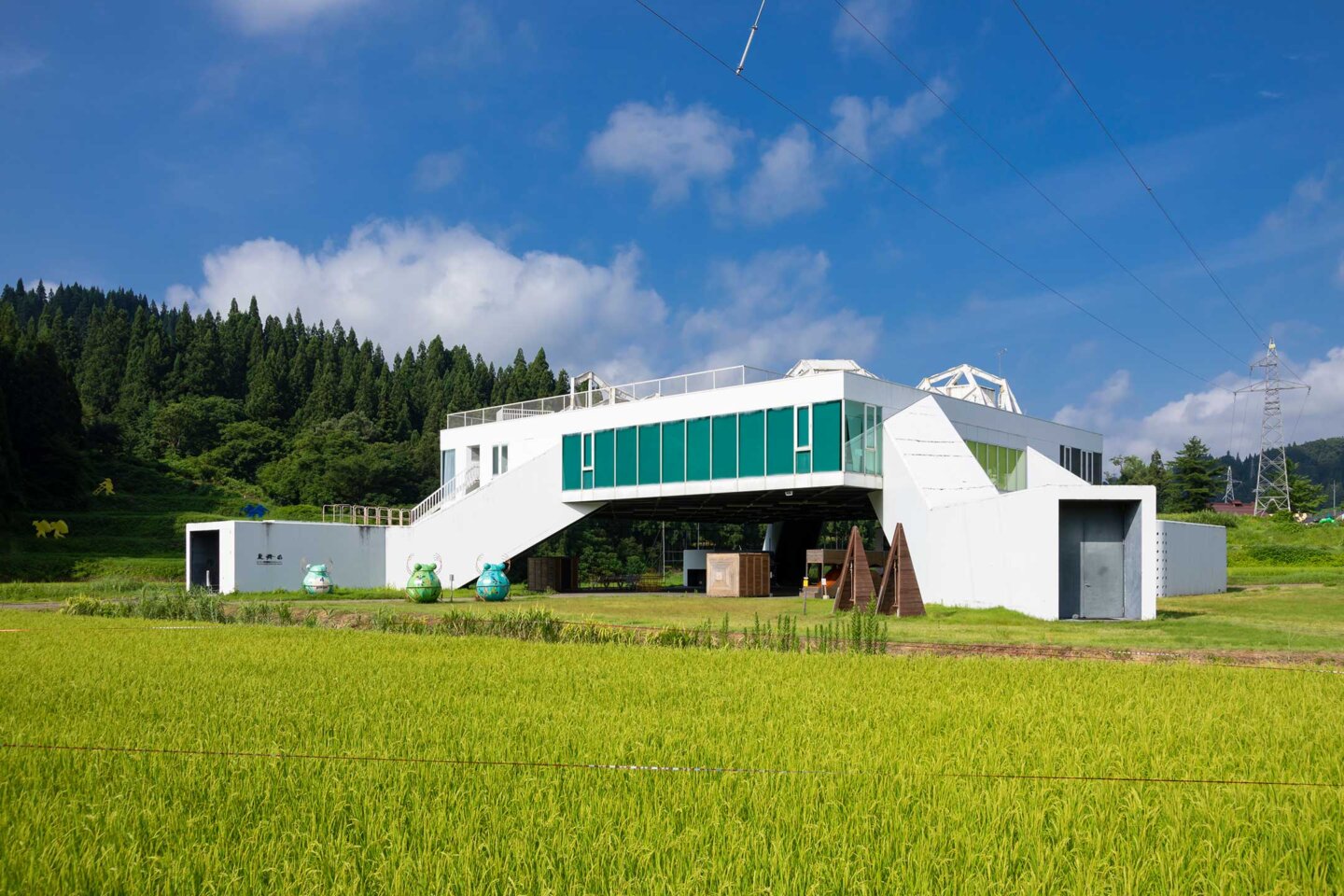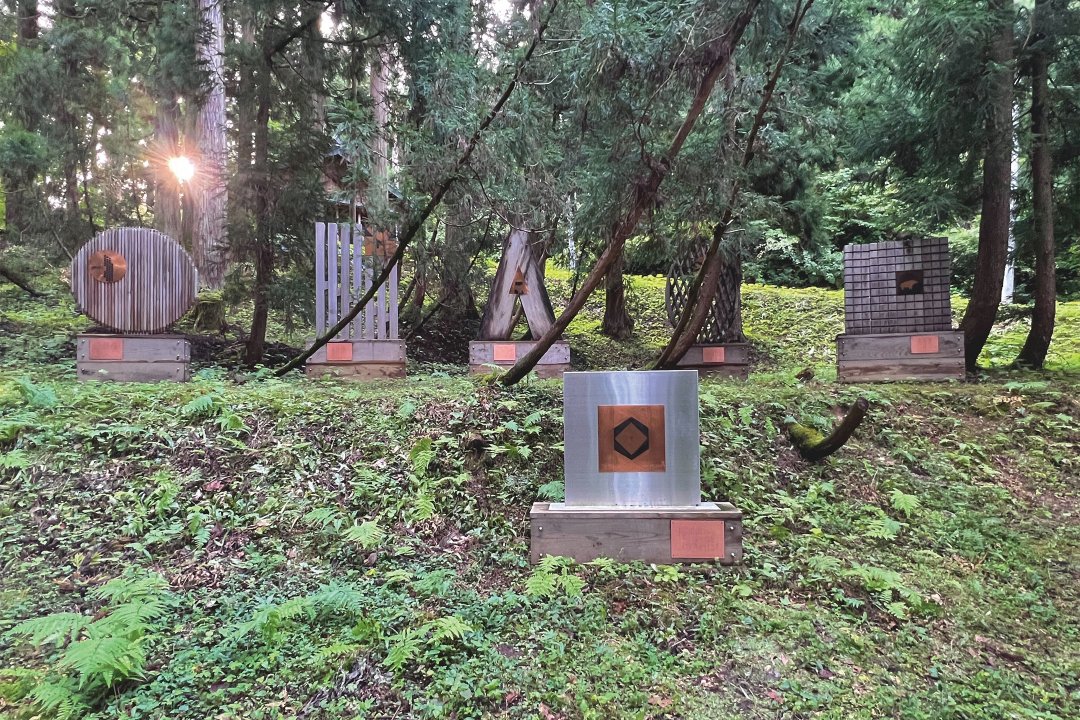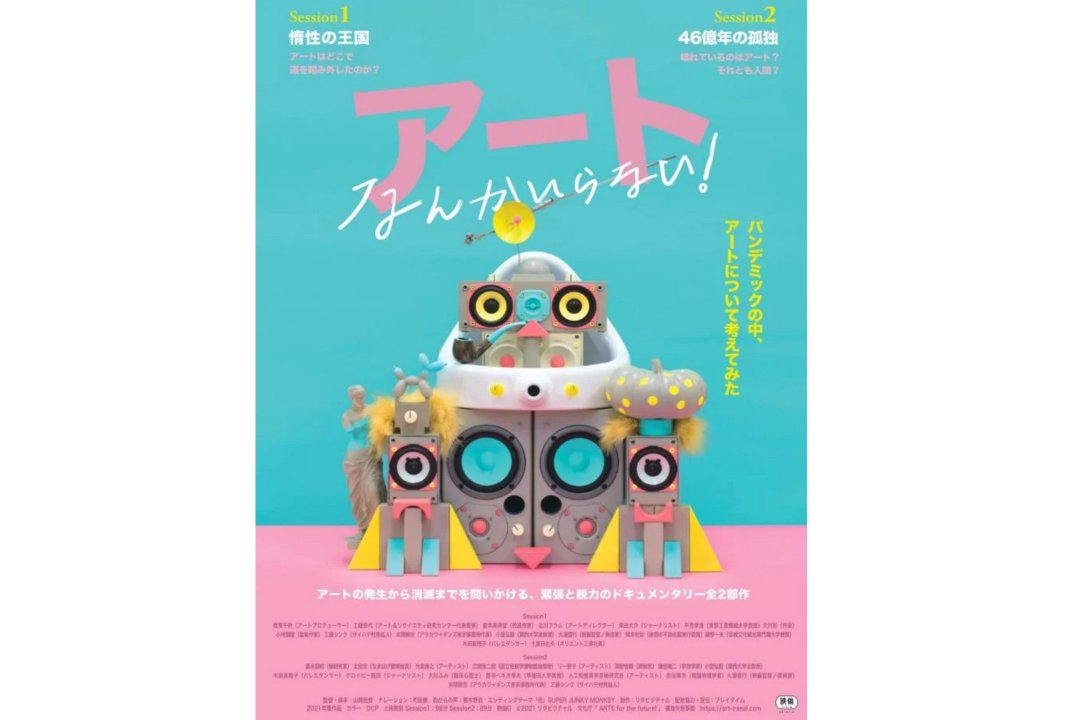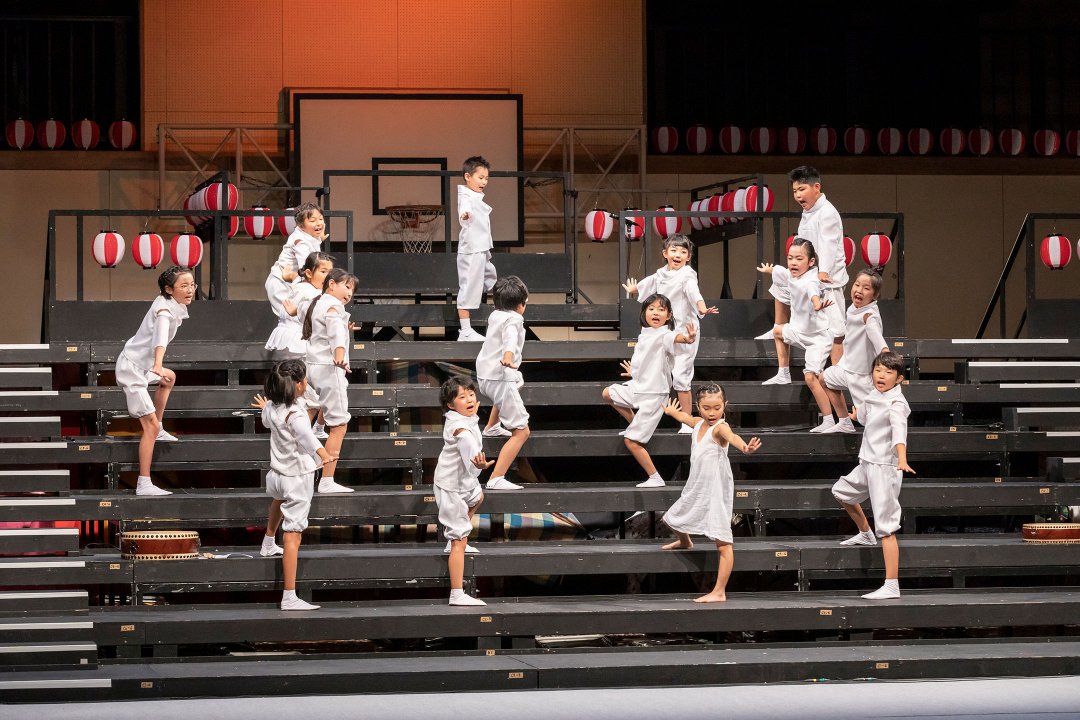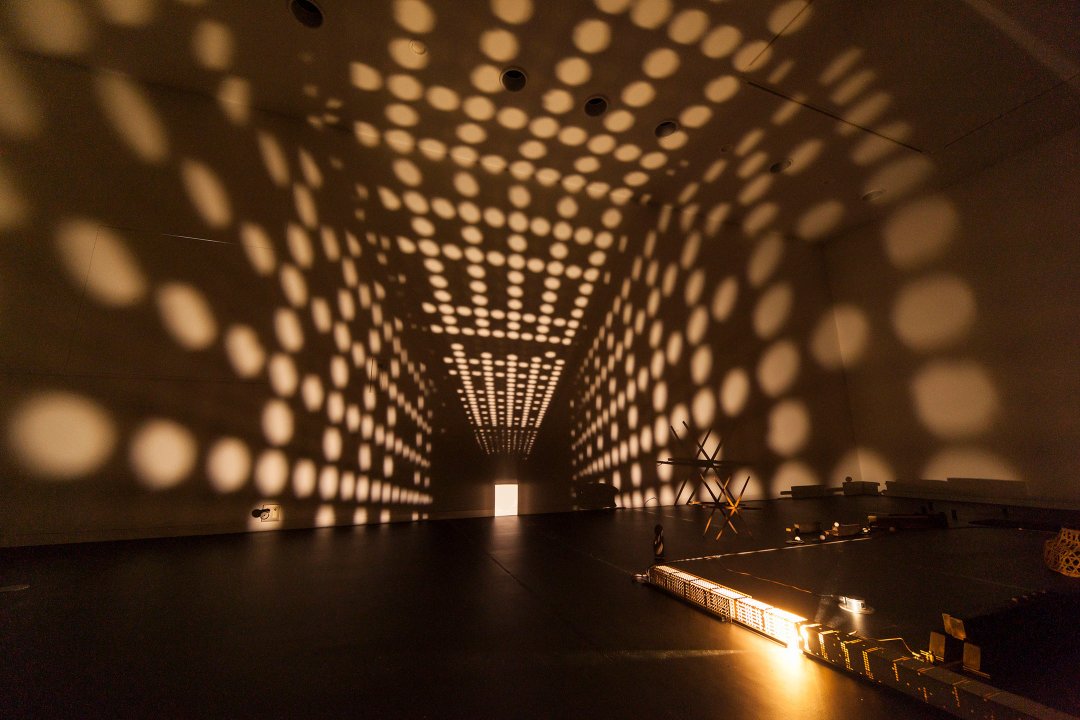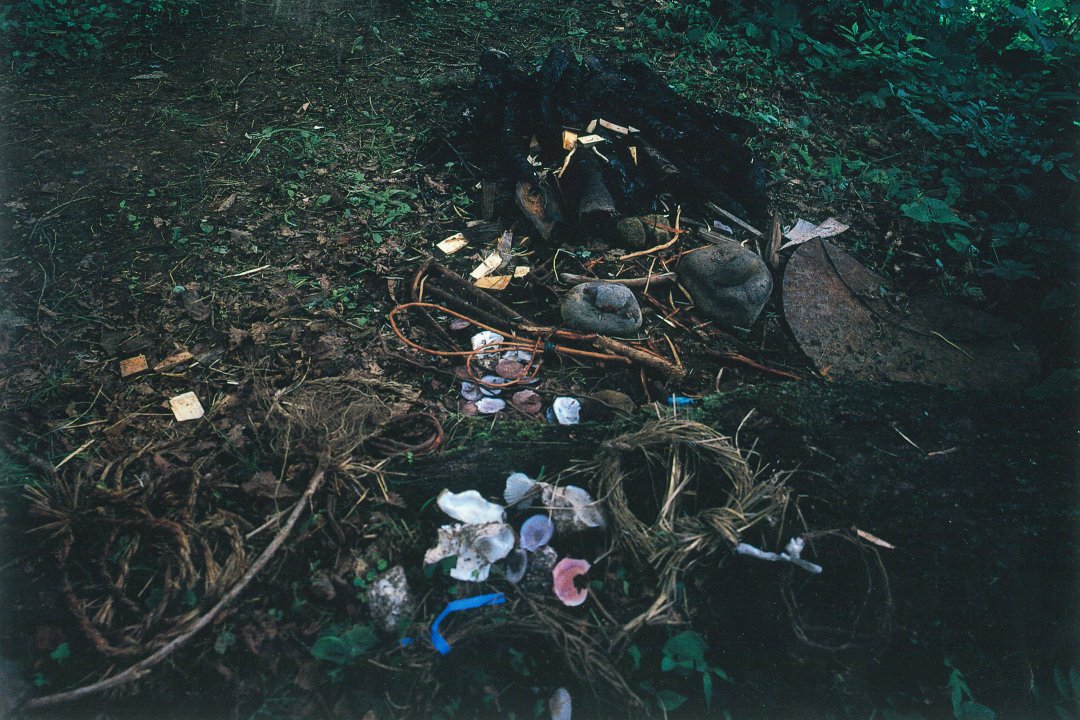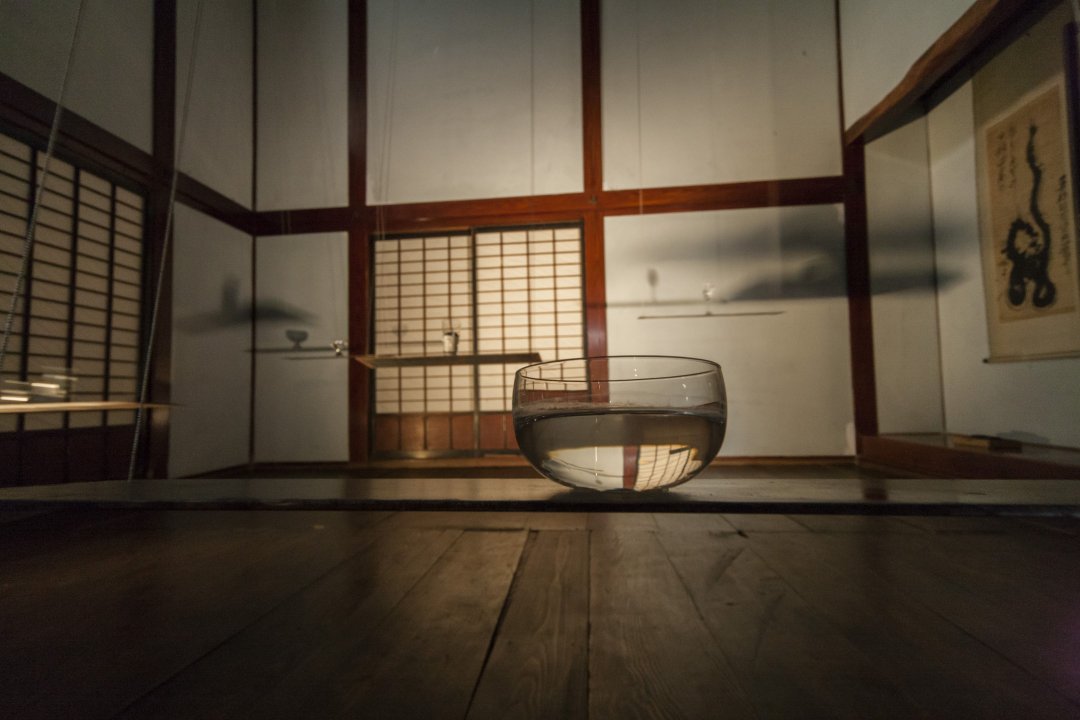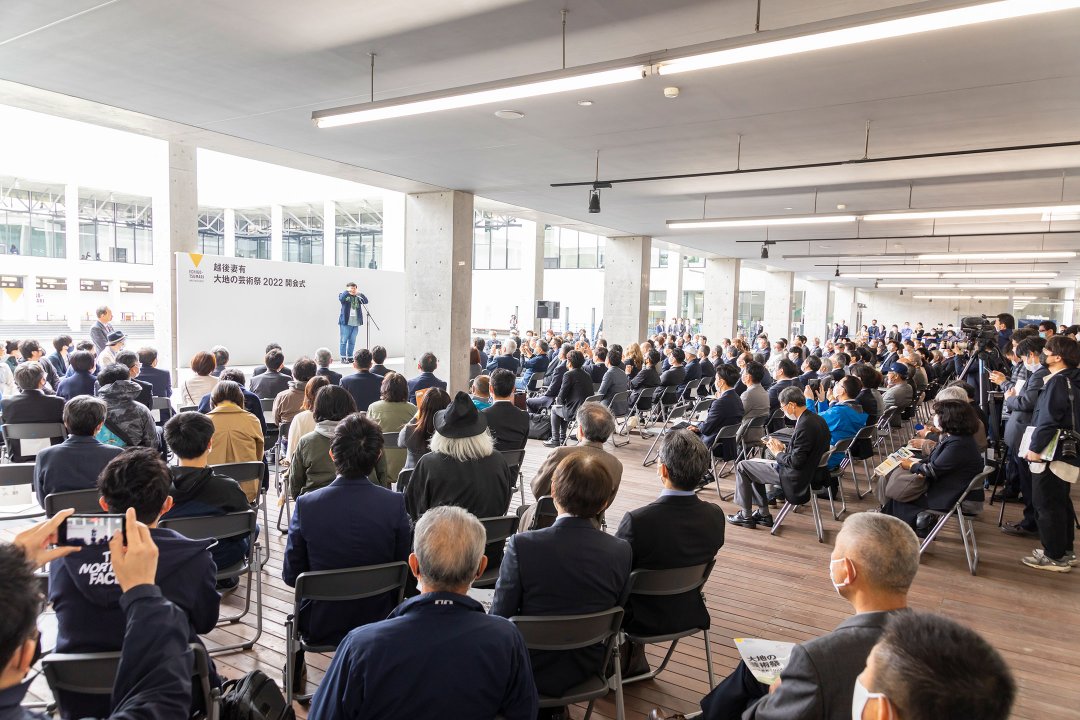Thinking 21st century art in the world from Niigata
Echigo-Tsumari Art Field - Official Web Magazine
Staff / From behind the scene of Echigo-Tsumari
Highlight of “Okome Expo” – Yuki Aima (D&DEPARTMENT)
13 November 2019
Preservation of Satoyama resonates with “Long-Life Design”
Have you heard about “Matsudai Tanada Bank”- a project that ETAT has been running since 2003? Matsudai area in the Echigo-Tsumari region in Tokamachi-city is one of the regions in Japan known for terraced rice field. “Matsudai Tanada Bank” is a project to preserve and nurture these terraced rice fields which have been losing owners. By inviting people to become Sato-oya (owner) through modest investment, the project has not only been supporting the production of rice but also expanding exchange between city and region for years.
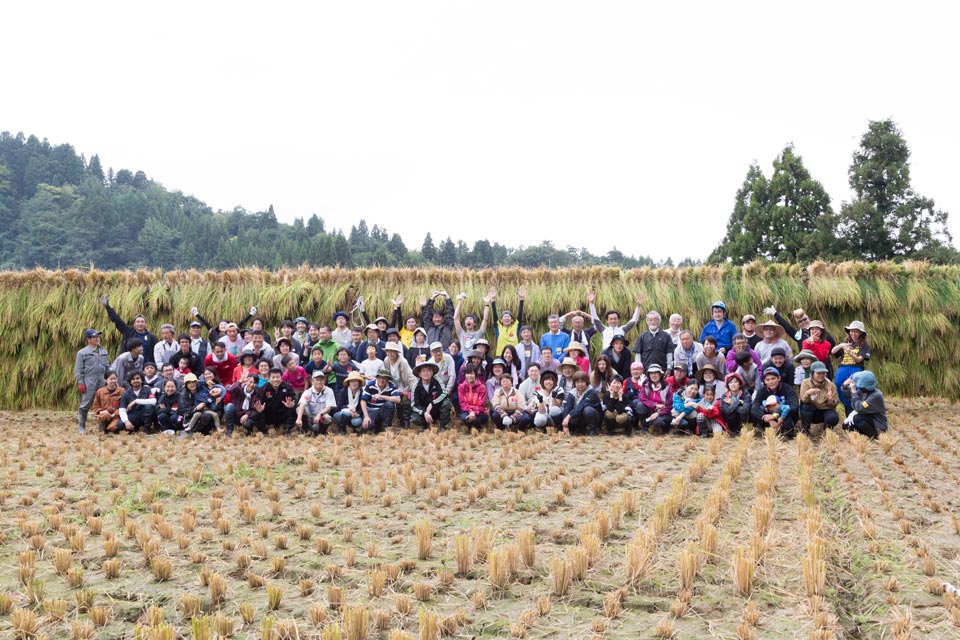
Harvest: Matsudai Tanada Bank (photo by Ayumi Yanagi)
“Matsudai Tanada Bank: Okome Expo – all about rice and its surroundings” was an exhibition and event at Matsudai Nohbutai where people can see, buy and eat newly harvested rice from these terraced rice field. The venue for the event was a temporary museum “d7 Matsudai Tanada Bank Museum” curated by Yuki Aima, the director of D&DEPARTMENT. He has been running “d47 MUSEUM” (Hikarie, Shibuya, Tokyo), the first Design Museum for products presenting uniqueness of 47 different prefectures on 47 display tables. Aima felt resonance between D&DEPARTMENT and ETAT in their respective ideas.
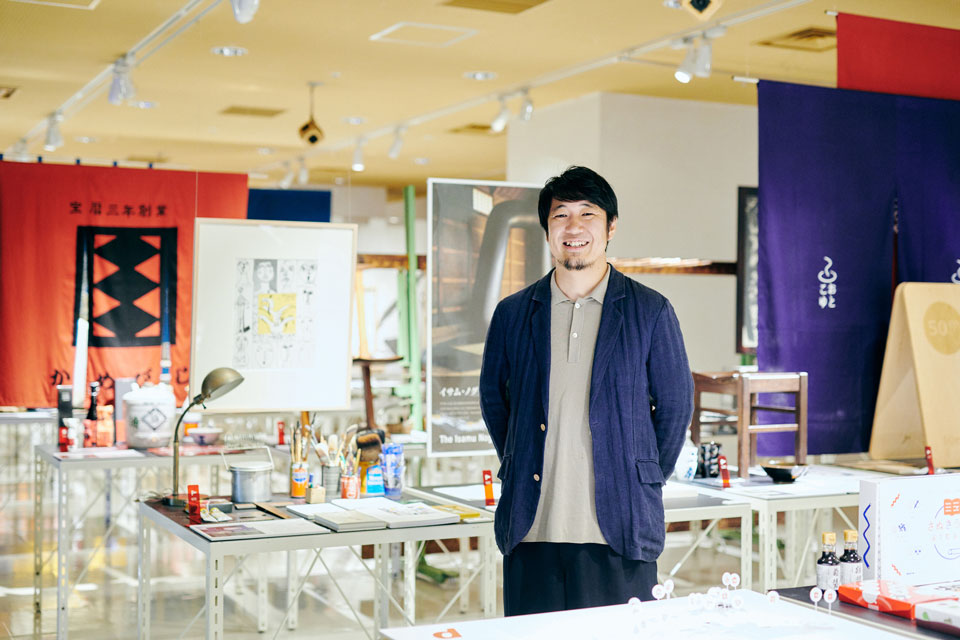
Yuki Aima at “d47 MUSEUM” operated by D&DEPARTMENT (at Shibuya Hikarie)
Aima: The agenda of D&DEPARTMENT is “Long Life Design”. What it means is the design that endures its value for long duration. The reason why we pay our great attention to traditional crafts and industrial products that have been adored for long time is to support such long-lasting products. What we want to communicate is that design is not just about “shape”. Things that relate to shapes such as people who make products, local industiries and life of community are equally important. All of these elements contribute to create something that lasts for long time. In addition, we hope such products will be used for long time after they reach to users. Such entire sequence is what we call as “design”.
What is important for “ETAT” is not just artworks. ETAT values exchanges that are nurtured by artworks as well as the preservation of local landscape. Aima felt resonance with such aspect of ETAT.
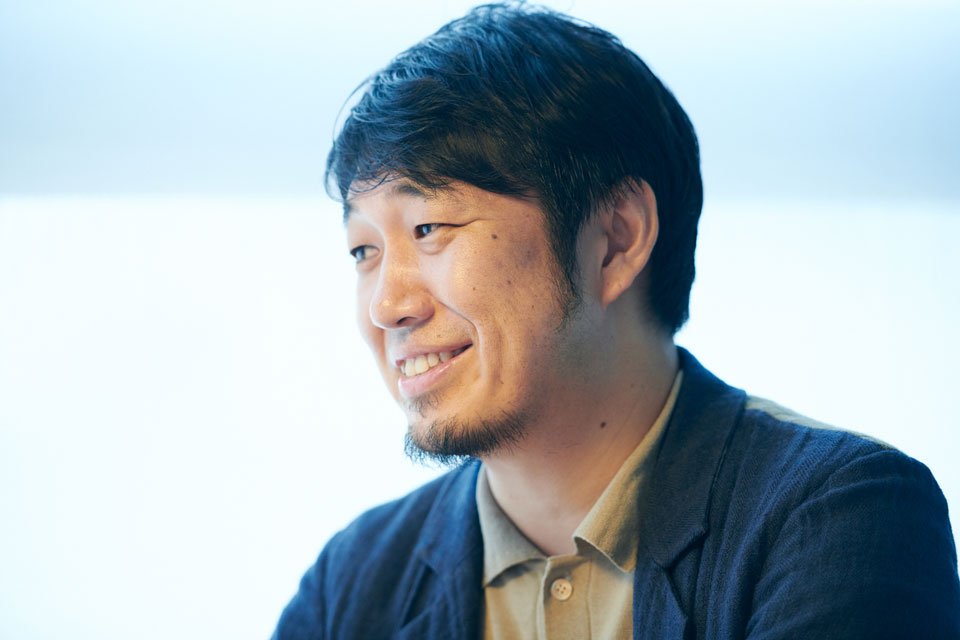
Aima: I visited the first itteration of ETAT in 2000 when I was a university student and I was deeply inspired. I had a strange sensation in a positive sense while exploring the nature in Echigo-Tsumari. I felt confused what was artworks and what already existed in the community. This experience has significant influence on my activities since then. Circumastance, background stories and communications in addition to the completed work itself consist art and design. Moreover, artists and designers are not the only people who are related to. Such perspective could be described as what we have in common with ETAT.
Stories of terraced rice field in the seven villages
“Matsudai Tanada Bank: Okome Expo – all about rice and its surroundings”is an exhibition learning about characteristics of the seven villages on the seven display tables that are related to Matsudai Tanada Bank. The concept of the exhibition was born from through research conducted on “distinctive features” of culture, history and people of the each village.
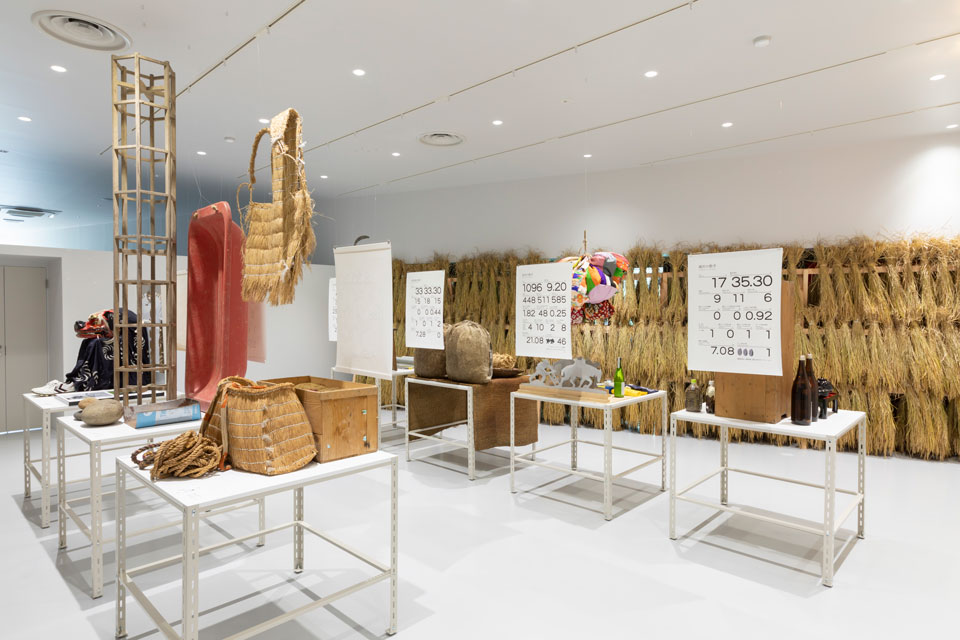
Matsudai Tanada Bank: Okome Expo – all about rice and its surroundings (photo by Osamu Nakamura)
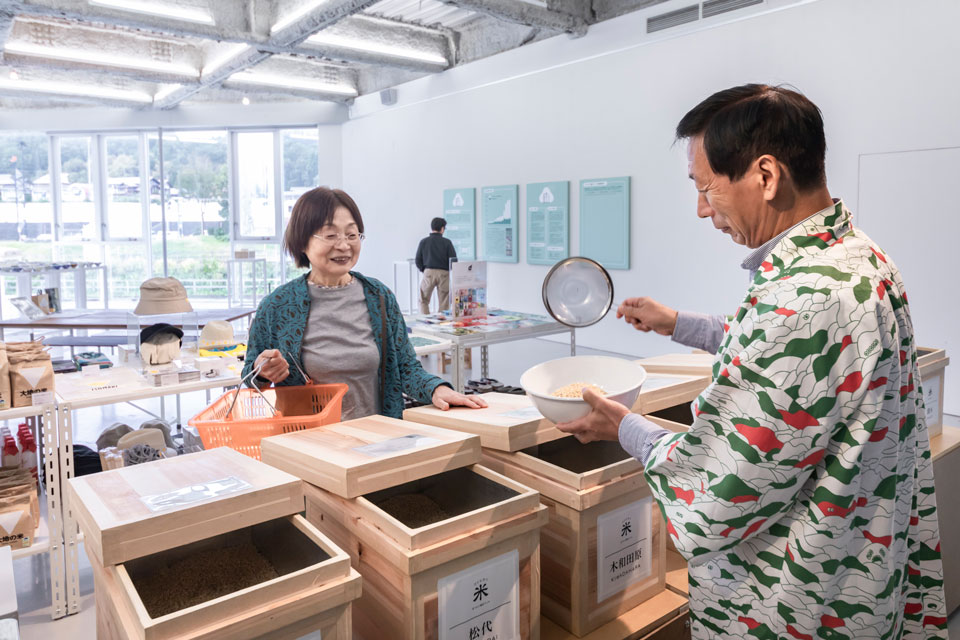
Newly harvested rice from the seven villages are sold by measures (photo by Osamu Nakamura)
Aima: As these villages are adjecent to one another, we couldn’t tell the differences by looking at terraced rice fields. Rice was delicious regardless of where it was produced. Of course they are all subtly different and at the exhibition, we sell rice harvested from the seven villages by measure. However, I felt we needed an alternative perspective to this museum. That was how we came to the decision on highlighting “people” who lived with the terraced rice field as we see the villages and landscape of terraced rice field.
He made lots of discoveries as he conducted interviews with many people in each village based upon the above concept which contributed to the exhibition.
Aima: For example, you will see“gozen” (dish tray) which consists of five lacqurewares in the exhibition. Every household in any village had one of those and people used to bring their own set to ceremonial occasions and eat from them. We borrowed these gozen for the display table from villages we heard a lot about history. What is hunging from the ceiling of the exhibition space is “Tokimaibukuro”. It was what we call“shugibukuro” (a special envelop used for giving money as a gift) for bringing rice to ceremonial occasions by those who didn’t have money but rice. Some families still had a few of these at home. These are original and cute as they were hand crafted from pieces of cloth they collected. While this custom doesn’t exist any longer, it is in people’s memory and they keep them at home. Being able to encounter such things was the best outcome.
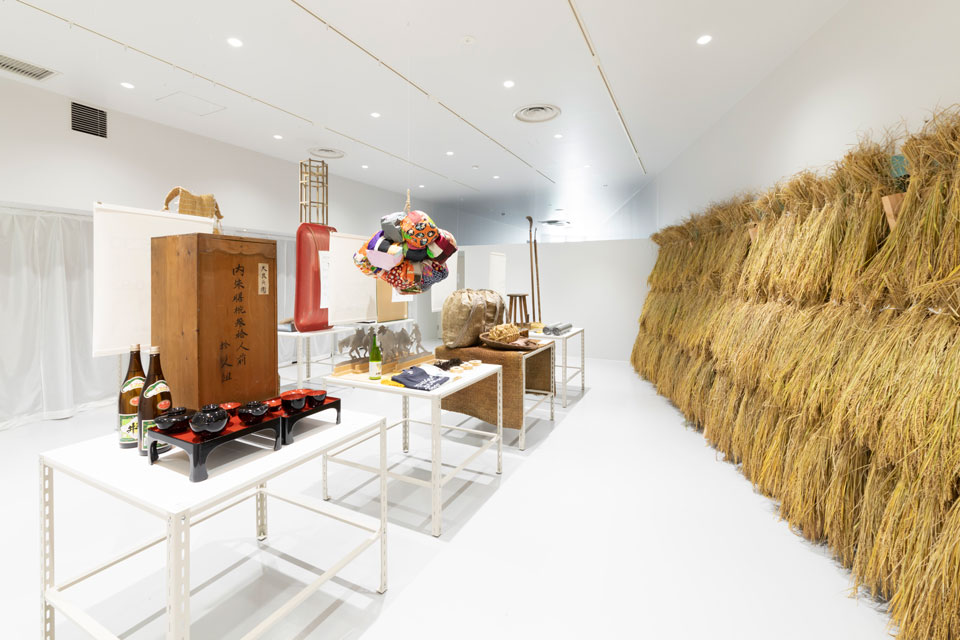
The photo on the left is “gozen” used in ceremonial occasions. The colourful bag next to gozen is Tokimaibukuro. (photo by Osamu Nakamura)
Aima also said that he was able to touched the behind the scene of ETAT through these research and interviews.
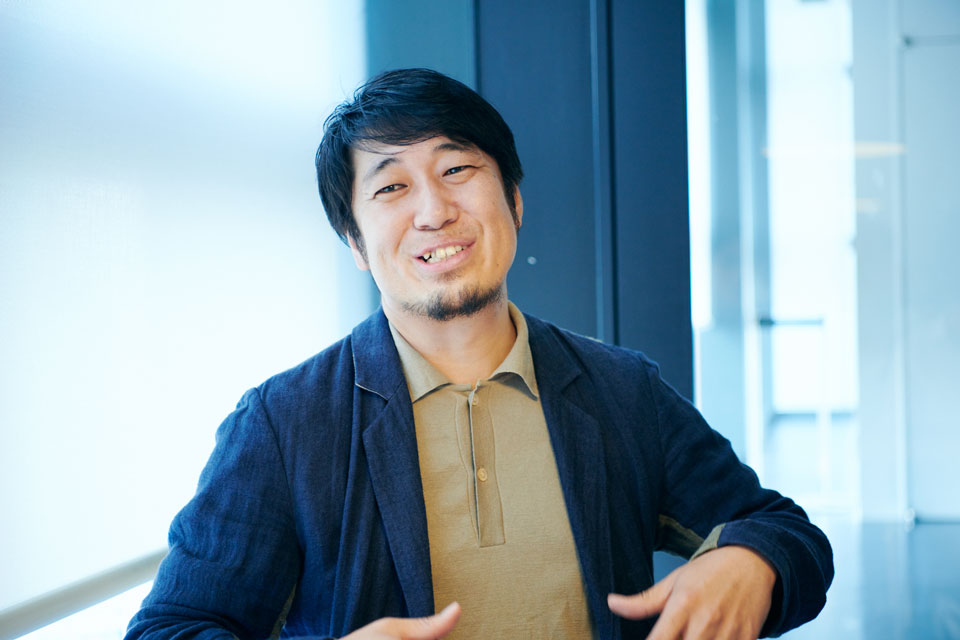
Aima: I felt that new communities had been formed through ETAT which had been functioned as traditional and familiar local festivals. For example, when we visited Murono village for interview through conversation, it was misunderstood as “cooking competition for visitors”. ETAT staff member didn’t even tell them it was their misunderstanding. Rather, they received villagers’ passion and generosity. In the end, we had such a wonderful time, hearing various stories over delicious local cuisine.
Towards the future of terraced rice field that bridges culture and nature
This exhibition about “Matsudai Tanada Bank” consists of 30 square meter space surrounded by a rope which represents the rice field outdoor and a table with approximately 100 ochawan (a bowl for rice). These show the area of rice production one could support by becoming sato-oya (owner) and the amount of rice distributed once a year during the harvest period respectively.
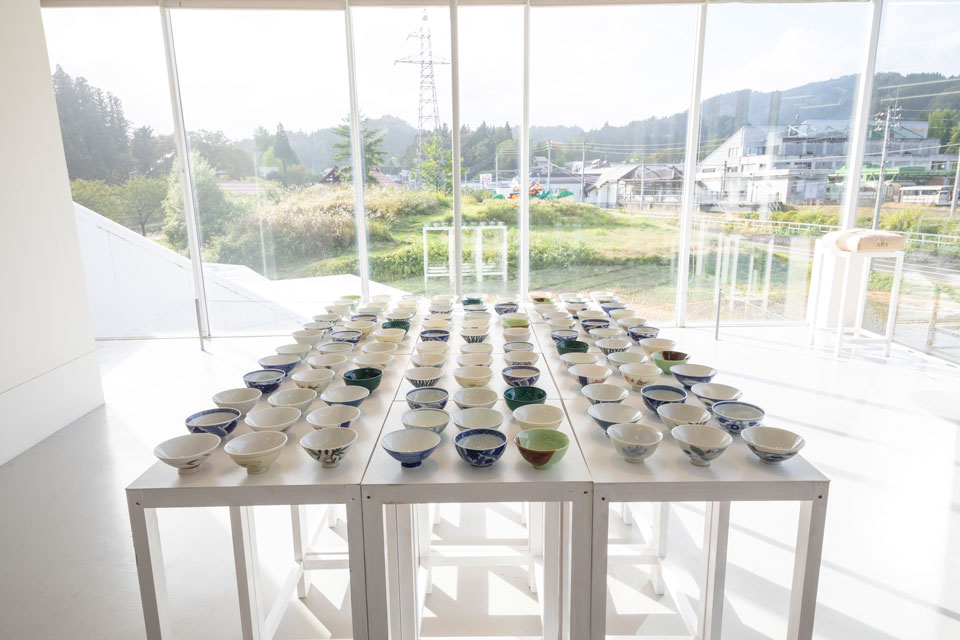
The amount of rice distributed to sato-oya is represented by ochawan (a bowl for rice) (photo by Osamu Nakamura)
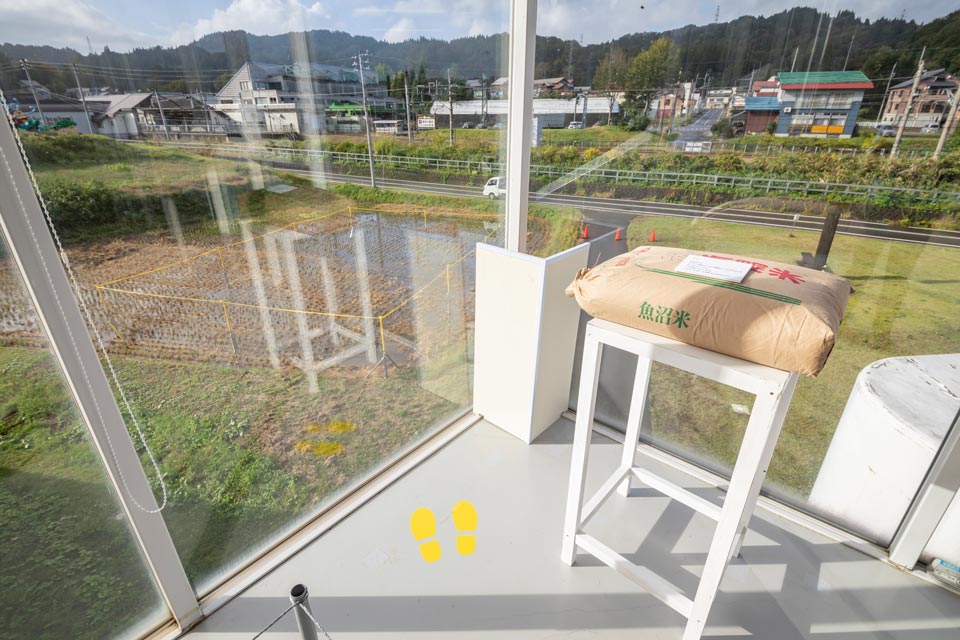
The spece indicated by a yellow rope outside overlooking from the window shows the area supported by one sato-oya. (photo by Osamu Nakamura)
Aima: It helps people to grasp what they are singinig up for if shown how much area of the terrace rice field they would support and how many bowls of rice they will be able to eat. If you take up “standard course” ownership, the area will be 150 square meter which would produce approximately 500 bowls of rice. Assuming you would eat one or two bowls of rice a day, your support is equivalent of the amount of rice you eat in one year.
The rice field once became abandoned have been returning to cultivated pieces of land as registered land for Matsudai Tanada Bank as the number of supporters have increased. However, due to the continuous expansion of the abandoned field, the propotion of cultivated land is not growing as a whole. While we continue to make an effort of incresing the area of cultivated field, we face another challenge that is beyond the range of support by sato-oya (owners): how to establish a channel for trading those rice produced from the terraced rice field.
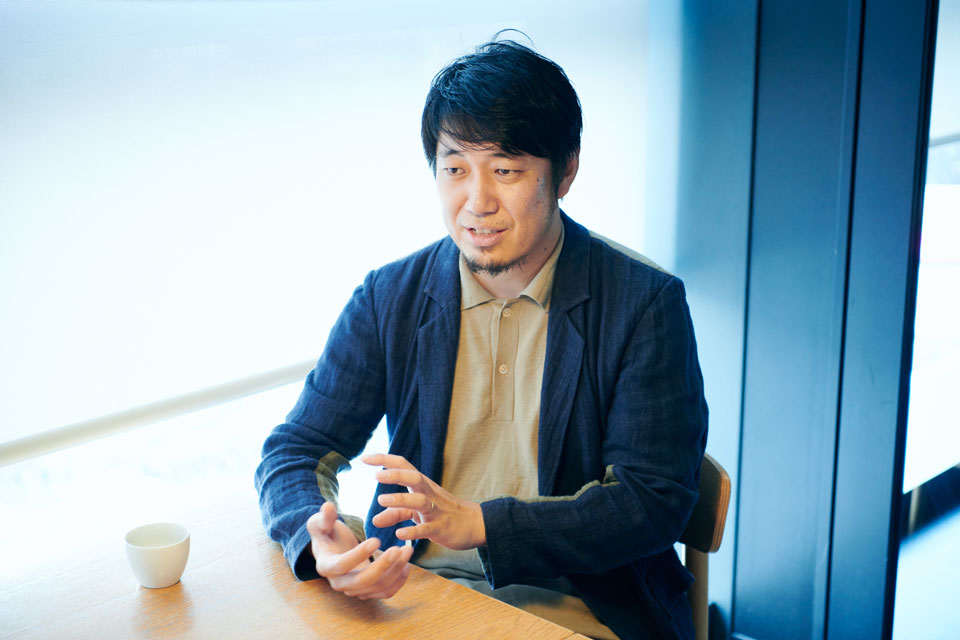
Aima: Looking at Matsudai Tanada Bank as a whole, 20% of the cultivated land is allocated to registered owners whereas the rest 80% have been looked after in different ways. If these propotions are reversed, we could return more to the local community and we could take the project to further phase. As spoke already, desing and art include engaging with relevant system and environment in addition to making things. In this regards, I regard activities conducted under Matsudai Tanada Bank can be described as a core mission of ETAT.
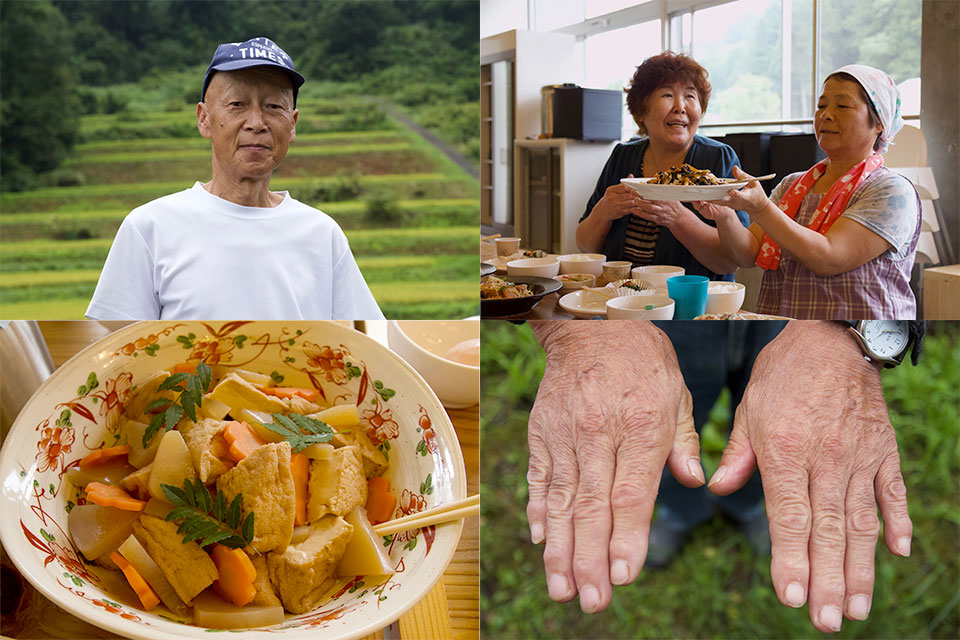
These interviews promted Aima to ask himself why we aim to reserve and maintain the terraced rice field in the first place and what is the terraced rice field for people’s life.
Aima: What I felt was that the terraced rice field stands in between the cultural life and the natural environment for the villagers. That is why they are compelled to protect the terraced rice field in order to take care of both culture and nature. As for myself, protecting the terraced rice field is a direct pathway to help keep the delicious meals prepared by lively people for generations to come.
As you become an owner of Matsudai Tanada Bank, you are invited to join rice production under the guidance of local experts throughout the year. Aima participated in rice planting and harvesting in the patch of the terraced rice field supported by D&DEPARTMENT in 2019.
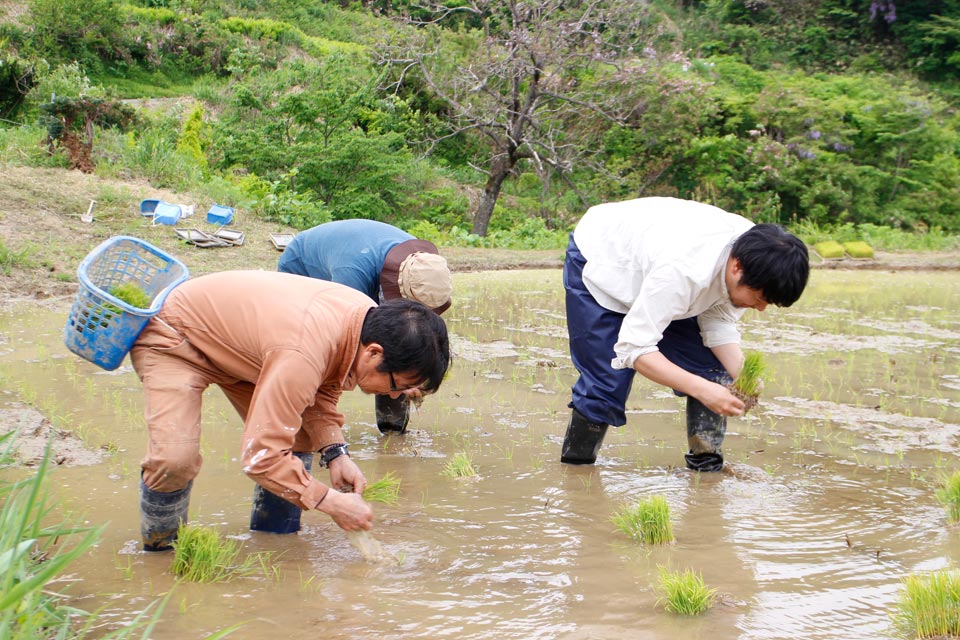
Aima and his colleagues experienceed in rice planting in May 2019.
Aima: I was sore for almost two weeks since the rice planting. While my experience was just a small part of the entire process of rice production, I felt sense of achievement in my own way. I also learnt that it has become possible to use farm machines in those small patches on the slope in recent years. This has made possible by farmers’ tireless effort in expanding the cultivated areas for making produce. Terraced rice field is exposed to landslide or wash away by rain if it is created in the wrong place. Local people do know how to make terraced rice field that would last. While terraced rice field may appear to be a part of the natural landscape, it is actually an artificial creation. It is compilation of wisdoms which is not just for protecting but also evolving.
We asked Aima how he wishes people to receive the exhibition at d7 Matsudai Tanada Bank Museum.
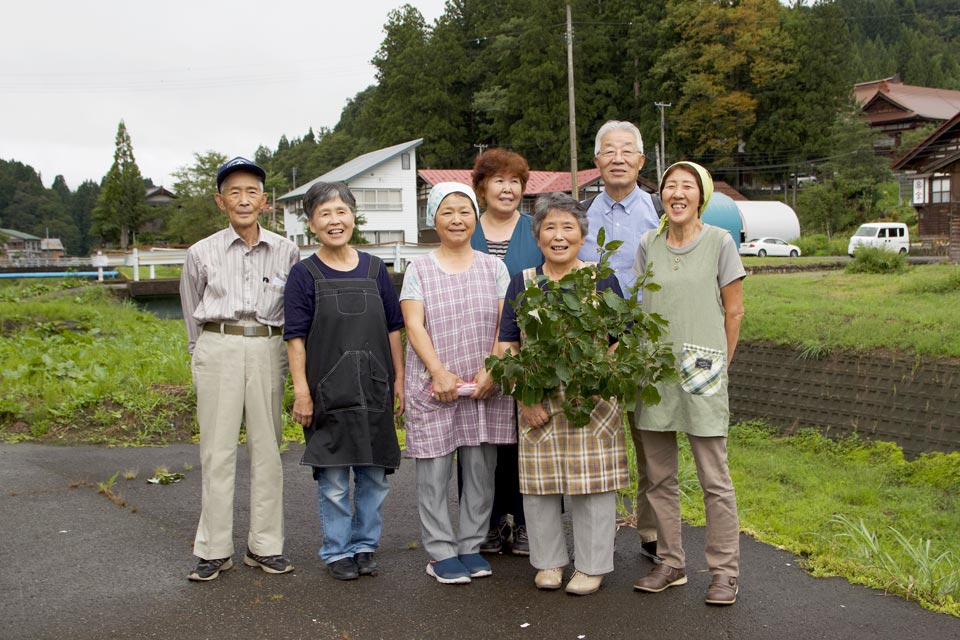
Aima: I hope that coming in touch with terraced rice field and life of villagers through the exhibition would lead to the beginning of something. It may alter how you feel about the terraced rice field and people in the region as you walk away from the exhibition. I would be pleased to see if the exhibition enables to highlight life and landscape of the region and result in new engagements.
“The Okome Expor” will be open until the end of year in addition to the related events in Tokyo. Look forward to seeing you.
Details
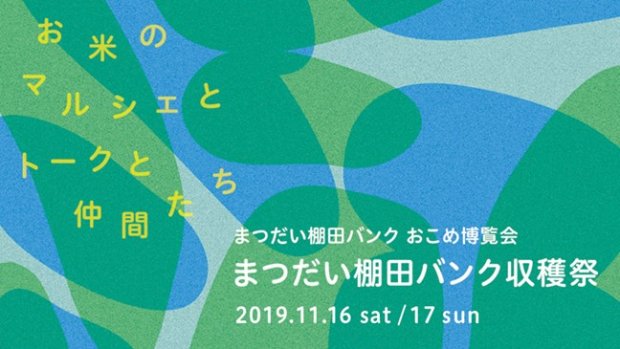
Matsudai Tanada Bank “Okome Expo”
Duration:Saturday 12 October – Sunday 22 December 2019
Venue:Matsudai Nohbutai (3743-1 Matsudai, Tokamachi-city)
Opening hours:10:00 – 17:00
Closed on Wednesdays
Admission:Adult JPY 500 / Child JPY 300
Other benefit: Lucky drawer on the first visit to the exhibition
Inquiries:025-595-6180
Related events in Tokyo
(1)”Echigo-Tsumari Set Meal” at d47 Shokudo
Duration:Wednesday 13 November 2019-
Venue:d47 Shokudo(8F of Shibuya Hikarie)
Echigo-Tsumari Set Meal including rice produced in the terraced rice field and locally grown vegetables will be served at d47 Shokudo which introduce 47 prefectures through food.
(2)”Matsudai Tanada Bank Harvest Festival – Rice Marche and talk”
Dates:Saturday 16 and Sunday 17 November 2019
Venue:8/ COURT(8F of Shibuya Hikarie)
Two-days of sales of rice from Matsudai Tanada Bank, talk about rice and participatory workshop. Pop-up registration desk for Matsudai Tanada Bank.
Text by Haruya Nakajima / Photo by Nozomu Toyoshima / Edit by Shinichi Uchida, Mitsuki Nakata (CINRA. NET Editorial Team)
Articles
Latest Articles
Stay connected with the ETAT official social media to receive the latest news and event information, and the many seasonal faces of Echigo-Tsumari as well as new issue of the ETAT official media, “Art from the Land”.






